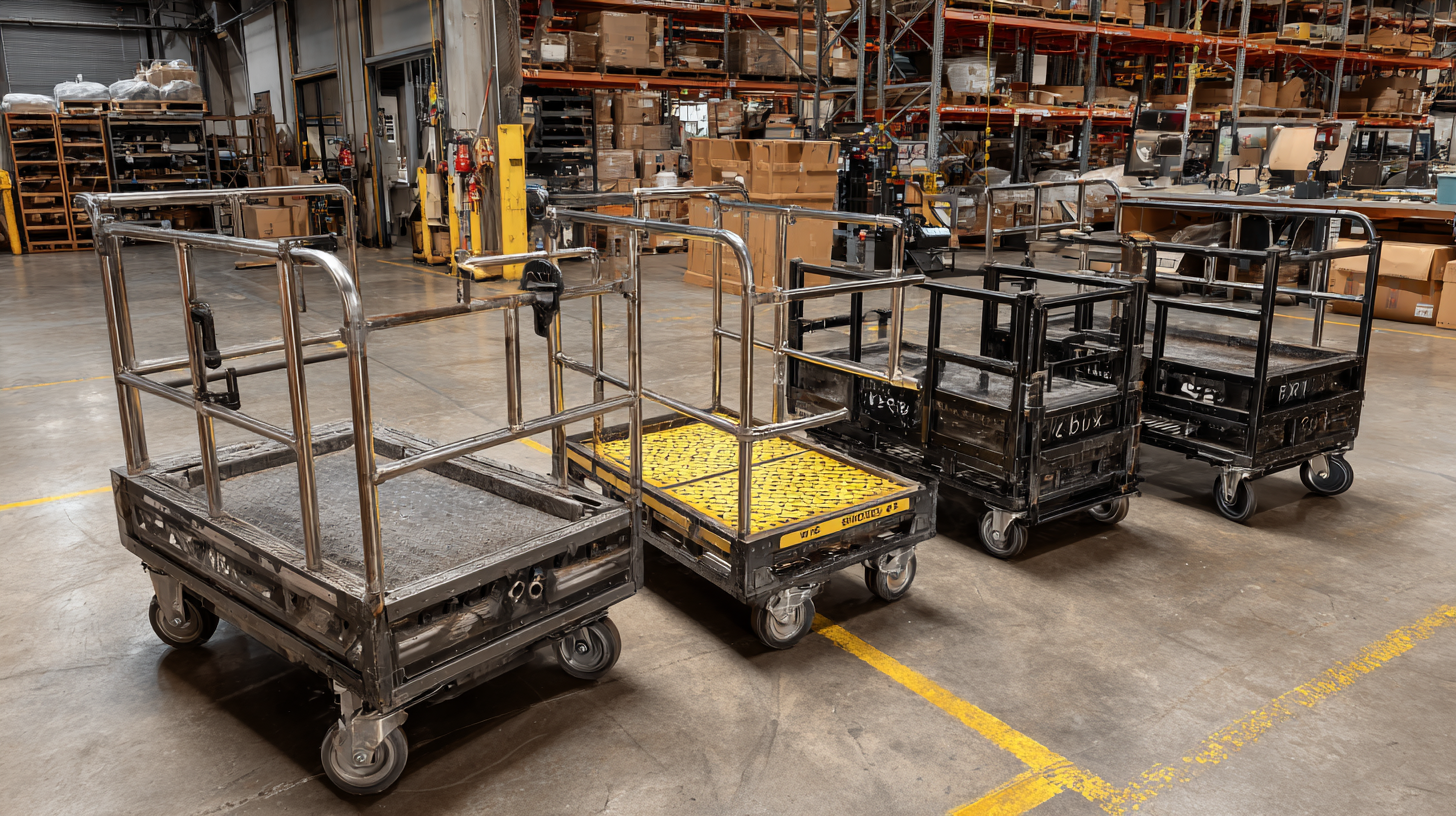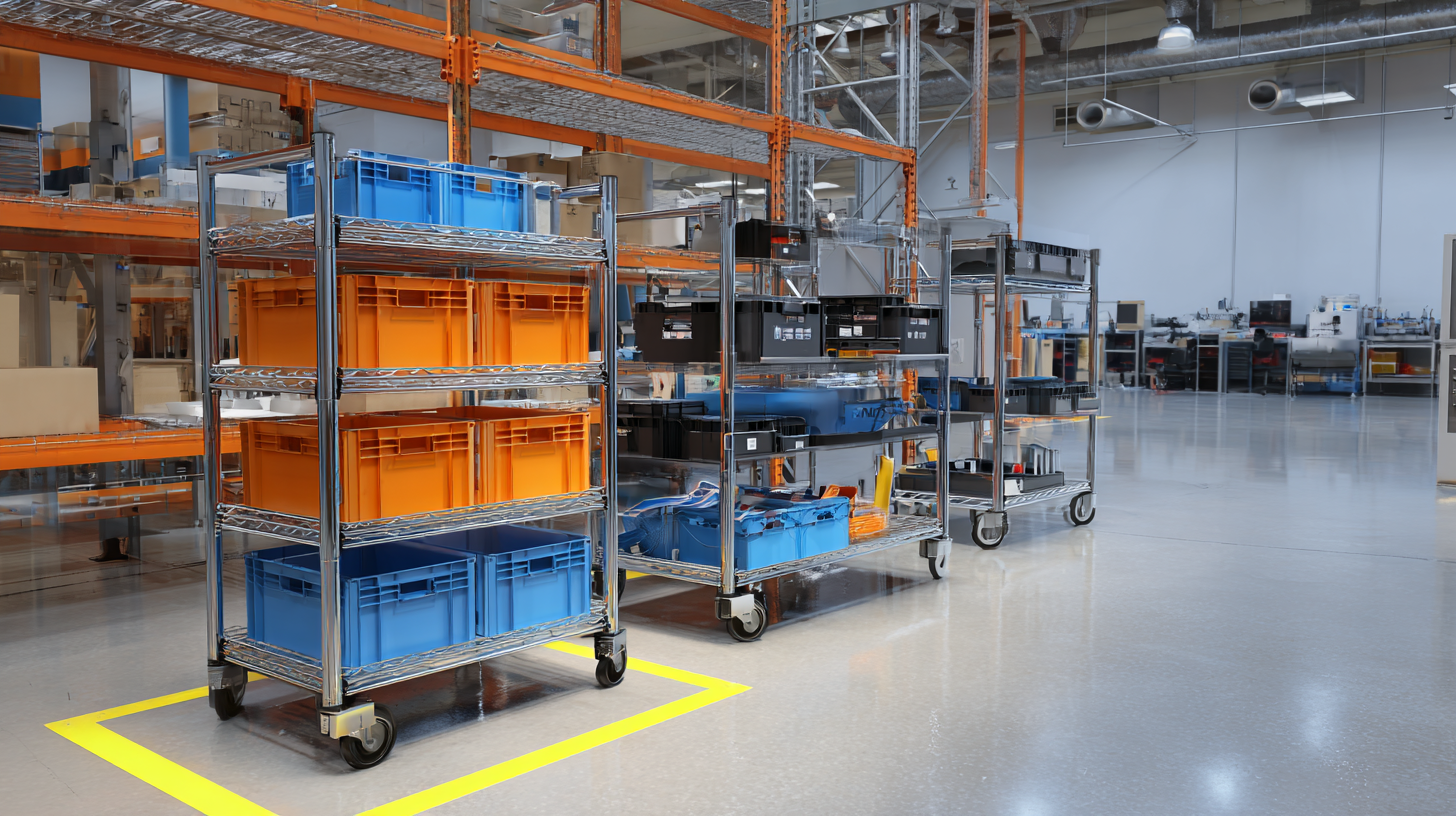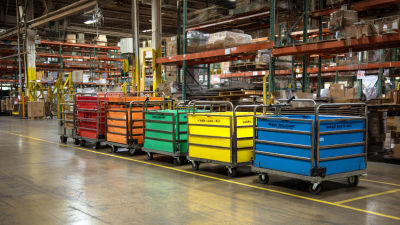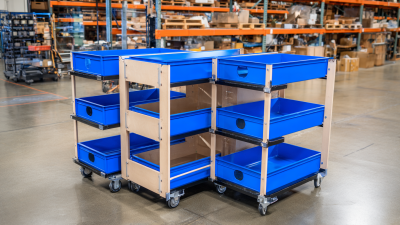Transform Your Workspace: The Ultimate Guide to Selecting the Perfect Material Handling Carts
In today's fast-paced industrial environment, the importance of selecting the right material handling carts cannot be overstated. According to a report by the Material Handling Institute, the efficiency of warehouse operations can be significantly improved through strategic investments in the right tools, with material handling carts playing a pivotal role. The global material handling equipment market is projected to reach approximately $250 billion by 2025, indicating a growing recognition of the necessity for effective material transport solutions. By transforming workspaces with optimized material handling carts, businesses can enhance productivity, reduce labor costs, and minimize the risk of workplace injuries. This guide aims to equip you with essential insights into selecting the perfect material handling carts tailored to your specific needs, ensuring your workspace operates at peak efficiency.

Types of Material Handling Carts: An Overview of Options Available
When it comes to selecting the perfect material handling carts, understanding the different types available is crucial for optimizing your workspace. Material handling carts come in various forms, each designed to meet specific needs and enhance efficiency in operations. From heavy-duty industrial carts to versatile utility carts, evaluating the space and load requirements is essential. Electric carts, for instance, can significantly reduce manual labor, while foldable options save space when not in use.
**Tips: Consider the weight capacity of the cart you choose.** Underestimating the load can lead to mishaps and hinder productivity. It's also worthwhile to think about mobility features; carts with ergonomic handles and smooth-rolling wheels can make a substantial difference in maneuverability, particularly in tight spaces.
Additionally, don't overlook the material of the cart itself. Steel carts are ideal for durability, while plastic options may be lighter and resistant to corrosion. By carefully analyzing your specific needs and the types of material handling carts available, you can transform your workspace into a more efficient, organized environment that maximizes productivity.
Key Features to Consider When Selecting Material Handling Carts
When selecting the ideal material handling carts for your workspace, several key features should guide your decision. First and foremost, consider the cart's load capacity. According to a report by Material Handling Industry (MHI), over 50% of workplace injuries are attributed to manual material handling, making it crucial to choose carts that can safely support your operational needs. For example, a cart with a capacity of 1,500 pounds can significantly reduce the physical strain on employees, enhancing safety and productivity.

Another vital aspect is the cart’s maneuverability. Carts equipped with swivel casters not only promote easy navigation in tight spaces but also improve overall efficiency as workers can transport materials quickly without unnecessary effort. Data from the Occupational Safety and Health Administration (OSHA) indicates that ergonomic tools, including well-designed carts, can lead to up to a 30% reduction in workplace injuries. Additionally, durability plays a critical role; selecting carts made from high-quality materials, such as steel or heavy-duty plastic, ensures longevity and reliability in demanding environments. Thus, investing time in evaluating these features will pay off by fostering a safer and more productive workspace.
Assessing Your Workspace Needs: Choosing the Right Size and Load Capacity
When selecting material handling carts for your workspace, assessing your specific needs is crucial. Start by evaluating the dimensions of your workspace. Consider the areas where the cart will be used—narrow aisles, tight corners, or open spaces—and choose a cart size that will easily navigate these environments without causing obstructions.
**Tip:** Measure your workspace and identify the largest and smallest areas to determine an appropriate cart size. This way, you ensure that the cart fits comfortably, optimizing both space and efficiency.
Next, load capacity is a critical factor. Identify the types of materials you'll be transporting and their weight. It's essential to choose a cart that can handle the maximum load you may need to carry while remaining stable and safe.
**Tip:** Always opt for a cart with a higher load capacity than your expected needs. This extra strength can be beneficial for unforeseen circumstances, preventing equipment wear and ensuring safety in your operations. Properly evaluating your workspace needs will lead to a more efficient and safer material handling solution.
Transform Your Workspace: The Ultimate Guide to Selecting the Perfect Material Handling Carts
| Cart Type | Size (L x W x H in inches) | Load Capacity (lbs) | Material | Best Use Case |
|---|---|---|---|---|
| Platform Cart | 48 x 24 x 36 | 800 | Steel | General Material Transport |
| Folding Cart | 30 x 20 x 36 | 400 | Aluminum | Compact Spaces |
| Industrial Cart | 60 x 30 x 42 | 1,200 | Heavy-Duty Steel | Heavy Loads and Warehousing |
| Utility Cart | 36 x 18 x 32 | 600 | Plastic | Office Supplies and Light Equipment |
| Nested Cart | 42 x 24 x 30 | 500 | Metal | Multi-Use and Space Saving |
Material Considerations: Choosing Durability vs. Weight for Your Carts
When selecting the perfect material handling carts, balancing durability with weight is crucial for optimal performance. Carts made from lightweight materials offer ease of mobility, making them ideal for quick tasks or transporting lighter loads. However, if your needs involve carrying heavy items or navigating rough terrain, investing in more robust options is essential. For instance, the best garden carts on the market can support several hundred pounds, equipped with sturdy wheels designed to maneuver effortlessly over various surfaces, ensuring that they endure frequent use without compromising their integrity.
Modern options have evolved significantly, competing not only in functionality but also in design. Many contemporary carts are designed with thoughtful features such as collapsible frames, making them easy to store without sacrificing strength. It's important to assess your specific requirements—whether it's transporting tools in the yard or moving supplies in a warehouse—so that you can choose a cart that delivers both durability and convenience. Ultimately, understanding the trade-off between weight and durability will allow you to select a cart that best fits your workspace needs.
Material Handling Carts: Durability vs. Weight
Cost vs. Value: Analyzing the Pricing of Different Material Handling Carts
When selecting the perfect material handling carts, understanding the cost versus value is crucial for making informed decisions. The global cargo handling equipment market is projected to reach a staggering USD 50.21 billion by 2034, demonstrating a compound annual growth rate (CAGR) of 4.8%. With the market's revenue anticipated to increase from approximately USD 27.33 billion in 2024, businesses must consider not only the initial costs of these carts but also their long-term value and operational efficiencies.
Investing in high-quality material handling carts can lead to reduced operational costs and improved productivity over time. As organizations strive to enhance their logistics and material management strategies, the demand for durable and efficient carts is on the rise. Additionally, as key players in the market develop advanced materials and ergonomic designs, customers can benefit from options that not only fit their budget but also enhance performance and user satisfaction in the workplace. This makes a comprehensive analysis of pricing and value essential for any business looking to optimize their material handling processes.

Related Posts
-

The Essential Guide to Choosing the Best Material Handling Carts for Your Business Needs
-

Innovative Material Handling Carts for Efficient Workplace Organization and Productivity
-

Revolutionizing the Food Industry How Food Packaging Machines Enhance Freshness and Sustainability
-

Revolutionizing Packaging: How Automatic Bagging Machines Enhance Efficiency and Precision in Industries
